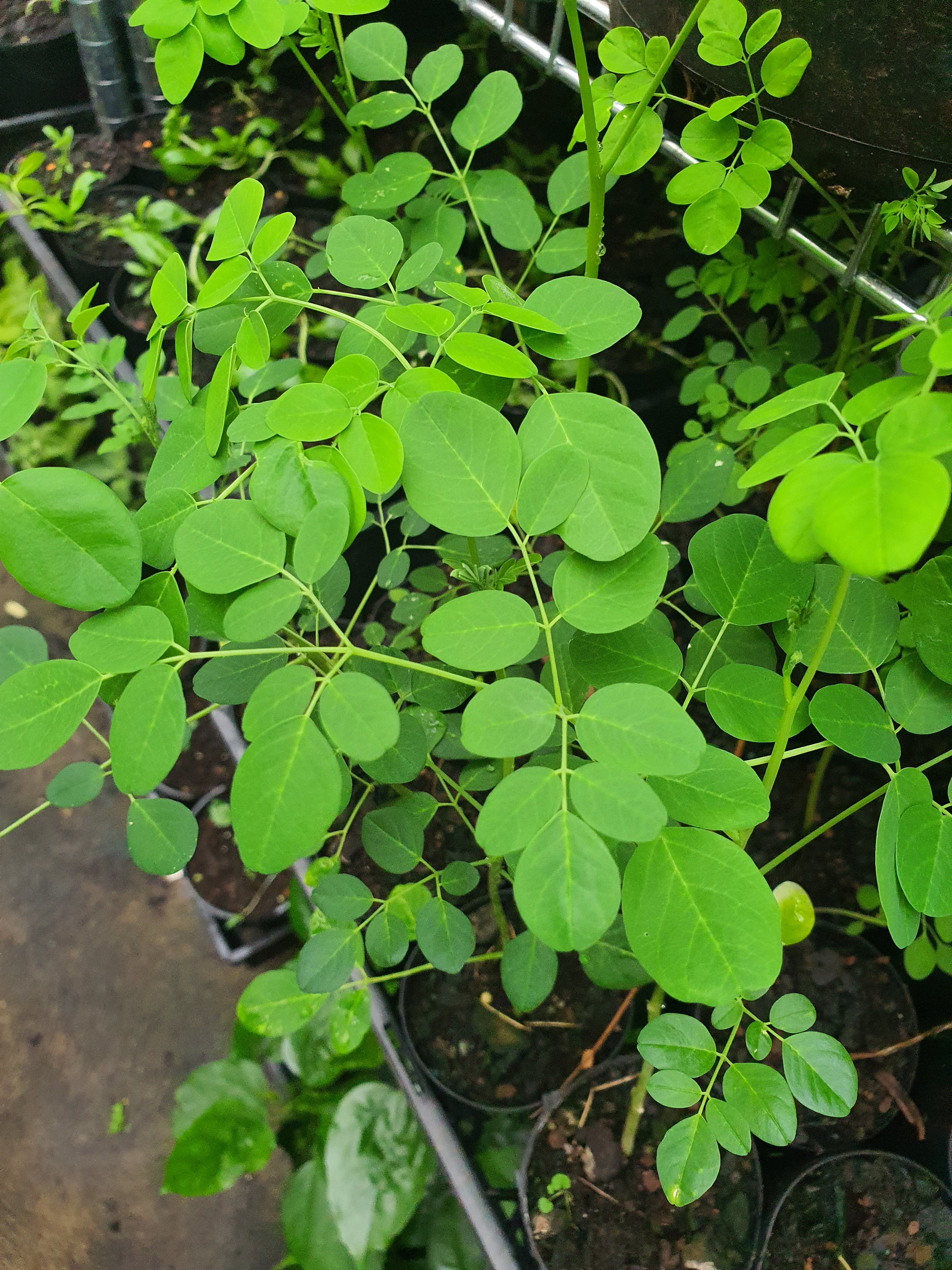Description
Drumstick plant for Small Garden
The Drumstick plant, also known as Moringa or Moringa oleifera, is a medium-growing, deciduous tree native to tropical and subtropical regions of Asia, Africa, and South America. Its name comes from the long, slender pods that resemble drumsticks, which are edible and packed with nutrients. Moringa is often called the “miracle tree” due to its attractive array of health benefits and versatile use in food, medicine, and cosmetics.
Growing Specifications:
- Size: The tree can grow up to 4-8 meters tall, though it can be kept smaller by pruning.
- Leaves: The leaves are delicate, feathery, and rich in nutrients, with a little spicy, mustard-like flavor.
- Flowers: The tree produces medium, fragrant white or pale yellow flowers, typically in clusters.
- Pods: The long, green pods are edible and can grow up to 45 cm in length.
- Roots: The roots are also used in some cultures for medicinal purposes, though caution is advised due to potential toxicity in large quantities.
Suitable Garden:
Moringa trees are well-suited for:
- Tropical and Subtropical Gardens: It thrives in warm climates.
- Dry Gardens: Moringa is drought-tolerant, so it can thrive in regions with limited water.
- Home Gardens: Small to medium-sized gardens can accommodate a Moringa plant. You can also grow it in containers for better maintenance.
Features and Benefits:
- Nutrient-Rich: Moringa leaves are packed with vitamins A, C, E, and minerals such as calcium, potassium, and iron. The pods, seeds, and flowers also contain antioxidants.
- Medicinal Uses: Known for its anti-inflammatory, antioxidant, and antimicrobial properties, it is mainly used in traditional medicine to treat various ailments like arthritis, digestive issues, and high blood sugar.
- Edible Parts: All parts of the tree are edible, from the leaves to the seeds and pods, making it a sustainable food source.
- Fast Growth: Moringa is one of the ,medium-growing trees, often reaching full maturity in just 6-12 months.
- Drought Tolerant: This tree requires minimal water once established, making it an excellent choice for areas with water scarcity.
- Soil Improvement: Moringa can enrich soil by improving nitrogen levels, which can benefit companion plants.
Growing Requirements:
- Sunlight: Full sun exposure is essential for healthy growth. Moringa requires at least 4-6 hours of direct sunlight each day.
- Soil: Prefers well-drained, sandy loamy soil. It can tolerate poor soils but will grow well in soil with a natural premium potting mix
- Watering: While drought-tolerant once mature, Moringa needs regular watering during its early stages of growth. Be cautious of over-watering.
- Temperature: It grow well in warm weather condition. It is not frost-tolerant and can die if exposed to cold temperatures.
- Pruning: Regular pruning helps maintain a manageable size and encourages new growth, as well as improving air circulation.
Why Choose Moringa:
- Nutritional Benefits: Moringa is often chosen for its very highly nutritious leaves, which can be used fresh, dried, or powdered and added to various dishes.
- Medicinal Value: The tree has a big history of use in traditional medicine for its diverse health benefits, particularly in managing blood sugar, cholesterol, and inflammation.
- Sustainability: The plant is drought-resistant, fast-growing, and can thrive in poor soils, making it a sustainable crop for areas with limited source.
- Multipurpose Plant: It offers a large range of uses from edible leaves, pods, and seeds to oil extraction from its seeds, which has cosmetic and culinary applications.
- Low Maintenance: Once established, Moringa requires very little maintenance, making it an ideal choice for home gardeners or those with limited experience.

